:quality(80)/business-review.eu/wp-content/uploads/2015/08/Thuringia.jpg)
From untouched nature to the Iron Curtain, classical concerts to captivating castles, BR took a tour of the German state of Thuringia – and it didn’t forget the famous potato dumplings!
Simona Bazavan
A national park boasting a primeval beech forest surrounded by medieval castle ruins, a string of picture book towns and cities where history can be seen and felt and one can literally walk in the footsteps of historical figures such as Martin Luther and Johann Sebastian Bach, as well as traces of the former Iron Curtain – this is the kind of overwhelming diversity travelers can find in the central German state of Thuringia.
The mending of a broken heart
There is layer upon layer of history to discover in Thuringia, from early medieval times to the more recent events marking the fall of communist dictatorships in Central and Eastern Europe. Over 25 years have passed since the former German Democratic Republic (GDR) and the Federal Republic of Germany (FDR) were reunited, an event that is perhaps most associated outside Germany with the emblematic fall of the Berlin Wall. However, the actual “wall” separating east from west stretched over 1,400 km across Germany, almost 800 km of which were erected in Thuringia. Memorial sites, border museums and even cycling and hiking trails have been set up along the former border, offering a glimpse of how daily life on the fringe of the Iron Curtain must have been.
“The border wall was not built as a means of defense against outsiders but as way of preventing people from escaping to the FDR,” says Volker Bausch, director of the Point Alpha Memorial between Geisa in Thuringia and Rasdorf in Hesse. As more and more East Germans fled to the West, the actual border evolved from the early 50s from a simple demarcation line to an ever increasingly fortified “death strip” .
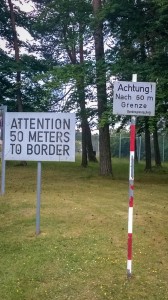
Simple barbed wire fences were replaced by concrete walls and posts while landmines and police injured and claimed the lives of hundreds trying to escape the GDR. Visitors get to see actual sections of the border wall installations and the memorial also offers extensive media resources showcasing contemporary accounts of everyday life in the heavily controlled border areas, escapes, forced displacements as well as the joy that accompanied the fall of the communist regime in 1989.
The site also hosts Observation Post Alpha, the most important US Cold War observation post in Germany, where original military barracks and equipment can be seen. The post overlooked part of the “Fulda Gap”, an area that would have been a prime invasion route for Warsaw Pact forces had the Cold War erupted into actual warfare; history buffs in particular will enjoy the interactive information resources available here.
Art lovers, on the other hand, will wish to linger around the kilometer and half-long art installation featuring 14 monumental sculptures by artist Ulrich Barnickel entitled the “Path of Hope”. And indeed, the feeling one gets here and elsewhere in Thuringia in the many memorials and museums along the former Iron Curtain is one of reassuring confidence in the power of remembrance, freedom and ultimately hope.
Perhaps nowhere else is the rupture caused by the separation of the two countries in normal life more obvious than in the village of Mödlareuth which became known as the “Little Berlin” after it was literally split in two at the end of the Second World War. A wooden fence was first built in 1952 but was replaced with a 700 m concrete wall in 1966 which only came down 23 years later. The Mödlareuth open-air Museum in Töpen, near the border with Bavaria, showcases sections of the border installation and offers a chilling glimpse into its history via an extensive exhibition of photographs and other multimedia resources.
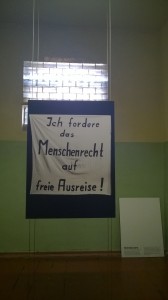
Moving away from the former border in downtown Erfurt, the state capital of Thuringia, the Andreasstrasse Memorial and Educational Site commemorates oppression and resistance during the dictatorship of the German United Socialist Party (SED) in Thuringia. Between 1949 and 1989 the red-brick building was a stronghold of the feared Stasi secret police and over 5,000 opponents of the regime were detained here. In December 1989 this was the first Stasi bastion to be occupied by the people in what was to become the Peaceful Revolution. Nowadays the memorial succeeds in catching both the suffocating and dystopian atmosphere of a communist prison and the uplifting optimism of its fall. It offers visitors guided and multimedia-based tours focused on the stories of contemporary witnesses.
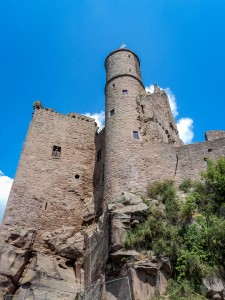
Traces of the Iron Curtain can also be found in rather unexpected places in Thuringia. The castle ruin Hanstein near Bornhagen is over 700 hundred years old and is one of the most famous castles in central Germany. Due to its proximity to the former border and its panoramic view of its surroundings it was not only closed to the public but it also hosted a military garrison during the GDR. In the 1960s the authorities even considered destroying the site, but fortunately never got around to doing so. The castle ruin is some 45 km from Eisenach, relatively close to the Hainich Naturalpark.
Also close by is the Trabi Paradise Weberstedt, a must-see for all car lovers and others too. The museum showcases some 20 Trabant cars, and while the brand itself is anything but conventional, the cars on display are altogether unique.
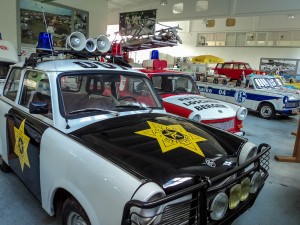
There is a Trabant police car, ambulance and fire truck, but also a Trabant campervan, a vehicle equipped with a pool and bar and even a Trabant pope-mobile.
The car itself is a symbol of the GDR, where it was produced for nearly 30 years with almost no significant changes, and still manages to arouse affection. Some of the cars can be taken for a ride and visitors can even rent a convertible Trabant for a picnic. The bad news is that the museum looks like it will be closed at the end of October as the site has changed ownership, but there are hopes that the authorities will manage to find another location for the 20 Trabis.
Germany’s green heart
With its vast forests and diverse landscape it’s not hard to understand why Thuringia is known as the green heart of Germany. And in a beautiful retort to recent history, nature has even found a way to transform the former Iron Curtain into something altogether different.
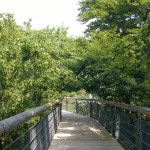
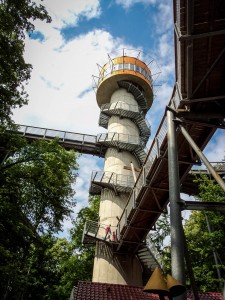
Known as the Green Belt, it is an area running along the former inner German border. Where once the “death strip” used to separate east from west, nature has stepped in and found fertile land to blossom as years of seclusion and lack of human intervention have enabled plants and animals to develop freely. Nowadays it is a paradise for nature lovers who can explore it either by foot or bike along numerous signposted trails in the southern Harz Mountains, Eichsfeld, Thuringian Röhn, Thuringian Forest and Thuringian Slate Mountains. Audio guides are available to tell the visitor more about the flora and fauna and about life in the former GDR.
Small areas of what is now the Hainich National Park were used during those times and even before as army training grounds, but today the traces of tanks are long gone. Instead, nature was left to be nature, as the motto of German natural parks goes, and visitors can enjoy the pristine beech forest and its unspoiled wilderness. The Hainich National Park is the only one of its kind in Thuringia and the 13th in Germany. It boasts 7,500 hectares of beech forest, which since 2011 have been part of the UNESCO World Natural Heritage.
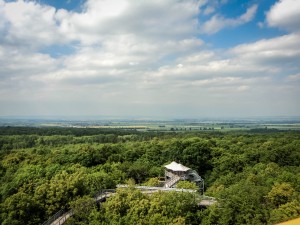
The park offers a variety of activities including hiking tours and interactive educational resources in its tourist center. However, its main attraction by far is a 530-meter canopy walk that allows visitors to explore the forest from a completely new perspective. The walk starts at 10 meters above ground and goes as high as 24 meters, meandering its way through the upper tree trunks to reach eye level with the treetops. The highest point is a 44-meter tall tree tower complete with tree house, which offers a scenic view of the forest, the Hainich area and its surroundings. And talking about surroundings, what sets the Hainich National Park even further apart is its proximity to numerous cultural sites such as the castle ruin at Hanstein and the Wartburg Castle as well as the towns of Eisenach, Bad Langensalza and Mülhausen.
Rendezvous in the heart of Germany
There are over 450 castles and fortresses scattered all over Thuringia with origins that can be traced back to the Middle Ages. Towering over the city of Eisenach among forested hills, Wartburg Castle is one of the most famous in the entire country. The castle dates back to the 11th century but was reconstructed in its present form 800 years later and is now a UNESCO World Heritage site.
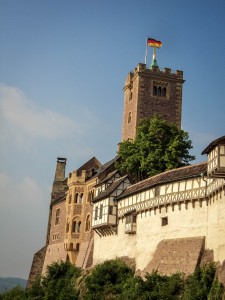
It was the home and place of work of the catholic Saint Elizabeth, who can be seen on castle walls depicted in frescoes by Moritz von Schwind. But what Wartburg is perhaps most famous for is hosting the excommunicated Martin Luther in 1521 when he translated the New Testament from Greek into German, a work considered the cornerstone of the modern German language. The study where Luther worked can still be visited.
Wartburg also offers a wonderful setting for cultural events all year round, such as the 2015 exhibition of painted portraits of Luther developed in the workshop of Cranach the Elder and Younger, as well as concerts each weekend.
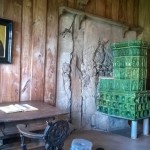
Traces of Luther can also be found in the picturesque nearby Eisenach, where he attended school and sang in the choir at Georgen Church. Visitors can also enjoy a museum dedicated to composer and organist Johann Sebastian Bach, who was born in Eisenach and was baptized in that same church. He later sang in the church choir, and from July through to September there is a free organ concert every day at 11am.
And because the best should always be saved for last, no trip to Thuringia should end without a visit to the state capital Erfurt. The vibrant city offers an excellent sample of the best Thuringia has to offer: rich history that can be seen on the city’s streets and in its wide variety of museums and diverse cultural life. All of which is set against the background of the refreshingly laid back city life and the ever present nature.
Luther called Erfurt the city of towers and that still applies today. From the impressive gothic ensemble of the St. Mary’s Cathedral and the Church of St. Severus to the serene atmosphere of the Evangelical Monastery of St Augustine’s, where Luther himself spent five years of his life, Erfurt boasts 15 abbeys and monasteries, ten chapels and 25 parish churches. Rediscovered in the 1990s, the city’s Old Synagogue dates back to the 12th century, which makes it Europe’s oldest fully intact synagogue. It hosts an extensive 14th century gold and silver coin and jewelry collection, the highlight of which is a unique gold wedding ring, five centimeters in height.
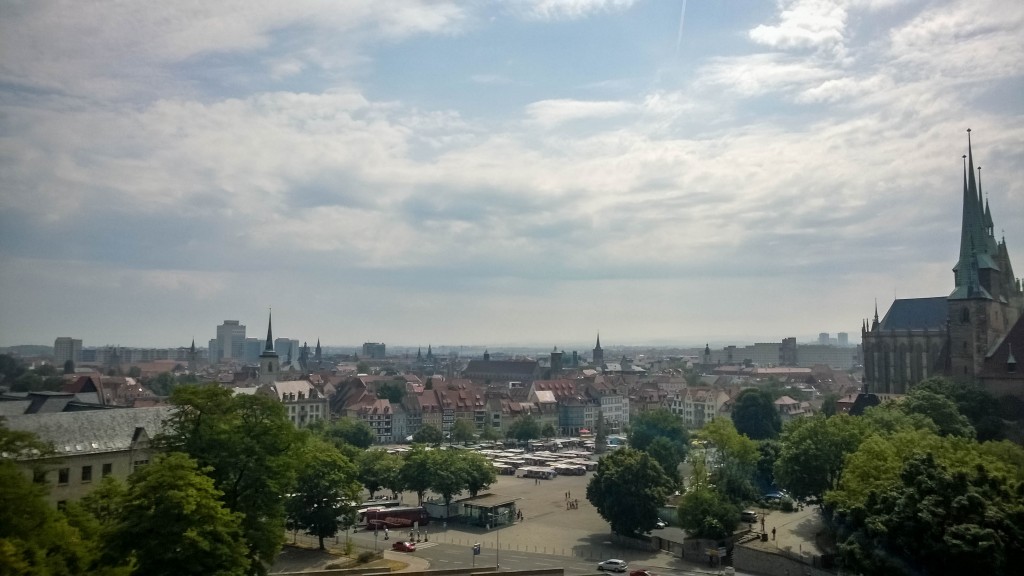
Erfurt is also known as the city of flowers due to a rich horticultural background and its summer flower markets, and has won the reputation of being a city of bridges as well. There are some 140 bridges in Erfurt, mainly crossing the river Gera which meanders through the city. The most famous is the 125-metre long Merchants’ Bridge (Krämerbrücke). Completely covered with 32 inhabited half-timbered houses, it is the longest of its kind in Europe. There are artisans’ and antique shops to be visited on the bridge, the most tempting of which is the Goldhelm chocolate manufacturer, an ideal place to indulge one’s sweet tooth or buy gifts for home.
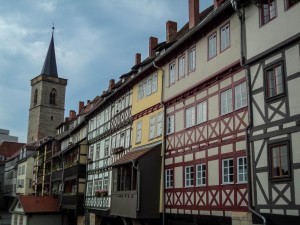
Merchants’ Bridge lies at the heart of Erfurt’s meticulously restored historic center, amid alleys crammed with quaint half-timbered houses, beautiful Renaissance buildings and small squares packed with restaurants and bars. Amid all this it is not hard to understand why the 1,270-year-old Erfurt has gained the epithet of the Thuringian Rome.
To cap it all off, there is a wide array of festivals in Erfurt all year round, such as the renowned open-air Cathedral Steps Theatre Festival, the traditional St. Martin’s Festival in November and the medieval Merchants’ Bridge Festival, providing yet another reason not only to discover Erfurt and Thuringia, but to return for more.



:quality(80)/business-review.eu/wp-content/uploads/2024/04/Resources-Every-Business-Should-Focus-On.png)




:quality(80)/business-review.eu/wp-content/uploads/2024/02/IMG_6951.jpg)

:quality(80)/business-review.eu/wp-content/uploads/2024/03/COVER-1-3.jpg)



:quality(80)/business-review.eu/wp-content/uploads/2024/04/cover-april.jpg)
:quality(50)/business-review.eu/wp-content/uploads/2024/04/Dr.-Max.jpg)
:quality(50)/business-review.eu/wp-content/uploads/2024/02/Nadia-Calvino.jpg)
:quality(50)/business-review.eu/wp-content/uploads/2024/04/WCEFheader2024.jpg)